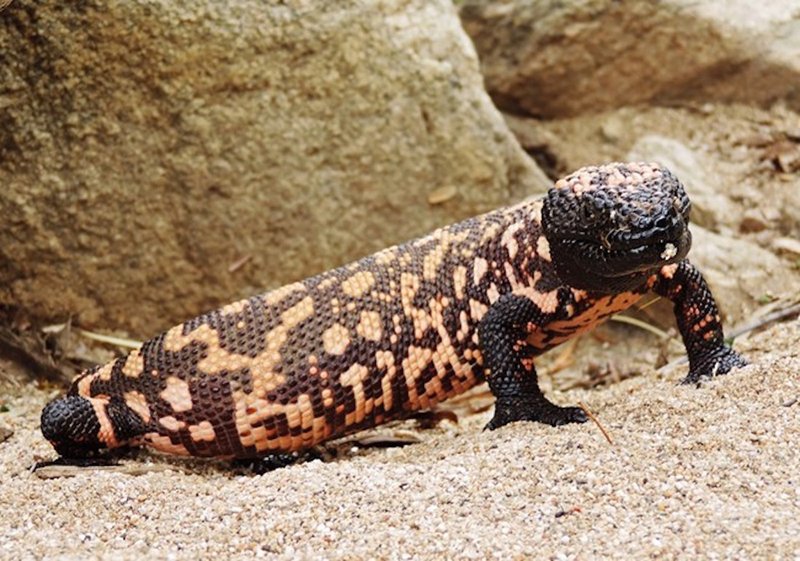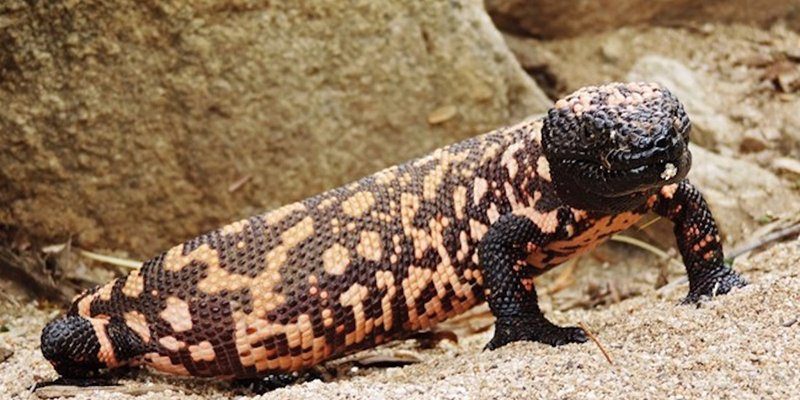
You might be wondering why the Gila monster has such a fearsome name, yet it doesn’t exactly fit the traditional monster mold. To shed some light on this intriguing animal, let’s dive into ten things you probably didn’t know about the Gila monster. Trust me, it’s going to be an eye-opening journey through the life of this remarkable lizard!
1. The Gila Monster is Venomous
Here’s the thing—this isn’t just any lizard. The Gila monster is one of only a couple of venomous lizards in the world. Unlike snakes, they don’t inject venom through fangs; their venom comes from glands in their lower jaws. When they bite, the venom flows down grooves in their teeth into the wound.
You might be thinking this sounds dangerous, right? It sure can be! The venom can cause extreme pain, swelling, and even nausea in humans. Thankfully, bites are rare, and most people won’t ever encounter a Gila monster up close. They’re more interested in munching on small mammals, birds, or even eggs than hunting humans!
2. Unique Appearance
The Gila monster is hard to miss thanks to its distinctive look. With its stout body and bright coloration, it’s not just another brown lizard blending into the desert. Its skin is covered in bead-like scales, which gives it a unique texture. The colors can range from black to orange, yellow, or pink, often appearing in striking patterns.
This eye-catching appearance serves a purpose too. The bright colors are a warning to predators: “I’m not just cute; I can bite!” In the animal kingdom, bright colors often signal that a creature can be toxic or dangerous. So, while it may look cute, the Gila monster is not one to mess with.
3. Slow Movers
You might picture monsters as speedy creatures, but the Gila monster is quite the opposite. These lizards move slowly and deliberately. They can only achieve a speed of about 1 mile per hour on a good day.
Why the slow pace, you ask? Well, it’s all about energy conservation. Gila monsters are not built for sprinting. They prefer to save their energy and hang out in their burrows during the hottest parts of the day. This helps them avoid overheating in the harsh desert sun, and it conserves energy for when it’s time to find food or mate.
4. A Long Lifespan
If you think about pets, you might expect certain animals to have short lives. But the Gila monster is an exception. In the wild, these lizards can live up to 20 years, and some even longer in captivity. That’s quite a long time for a reptile!
Their long lifespan means that Gila monsters can have many opportunities to mate and spread their genes over the years. This longevity is part of what makes them a fascinating species to study for scientists interested in longevity and reptile behavior.
5. Specialized Diet
So, what do Gila monsters eat? Their diet primarily consists of small mammals, birds, and the eggs of other animals. However, they have a unique adaptation that sets them apart: they can consume a large meal and then go several weeks without eating again.
When they catch a meal, they often consume it whole. Thanks to their slow metabolism, they can take their time digesting that food. This makes them less reliant on constant hunting and allows them to thrive in their sometimes-sparse desert environment.
6. Territorial Creatures
Gila monsters are not the social butterflies of the lizard world. In fact, they can be quite territorial. Males, in particular, will defend their space against other males during mating season. They might engage in ritualistic displays, such as puffing out their bodies or hissing, to establish dominance.
Being territorial means that these creatures are always aware of their surroundings. They rely on their keen sense of smell to detect other Gila monsters nearby, which helps them maintain their territory and stay safe from potential threats.
7. Play a Role in Medicine
Here’s where it gets interesting! Researchers have uncovered that the Gila monster’s saliva contains proteins that are being studied for their potential to treat diabetes. One of these proteins, called exenatide, can help regulate blood sugar levels.
This fascinating connection means that the Gila monster isn’t just a cool critter to look at; it could play a critical role in medical advancements. It’s a reminder of how nature can lead us to innovative solutions in human health.
8. They Hibernate in Winter
Like many reptiles, Gila monsters go into a state of dormancy during the colder months. They hibernate in their burrows, slowing their metabolic rate dramatically to conserve energy. This is essential for survival since food is scarce during winter.
It’s important for these lizards to find a safe spot to hibernate, which usually means digging into the earth where they can stay warm. You might compare it to how we cozy up indoors during chilly weather. The Gila monster knows how to take care of itself, even when the temperatures drop!
9. Conservation Status
Despite their toughness, Gila monsters face threats. Habitat loss and illegal collection for the pet trade are significant challenges for their populations. As a result, the Gila monster is classified as a threatened species in some areas.
Conservation efforts are underway to protect their habitats and raise awareness about their important role in the ecosystem. By working to conserve the Gila monster, we’re also helping to preserve the delicate balance of the desert ecosystems they inhabit.
10. Myths and Misconceptions
Last but not least, let’s clear up some common myths about the Gila monster. One big misconception is that they’re aggressive. In reality, these lizards are quite shy and prefer to avoid confrontation. They’d rather retreat than attack when they feel threatened.
Additionally, while they are venomous, the bites are rare, and fatalities from Gila monster bites are extremely uncommon. Understanding the true nature of these creatures can transform our appreciation for them from fear to fascination.
As we wrap up, it’s clear the Gila monster is much more than its fierce name suggests. From its unique diet and habitat to its role in medical research and conservation challenges, this remarkable lizard has a lot to teach us. So next time you hear someone mention the Gila monster, you can share some of these intriguing facts and showcase just how fascinating these creatures truly are.

